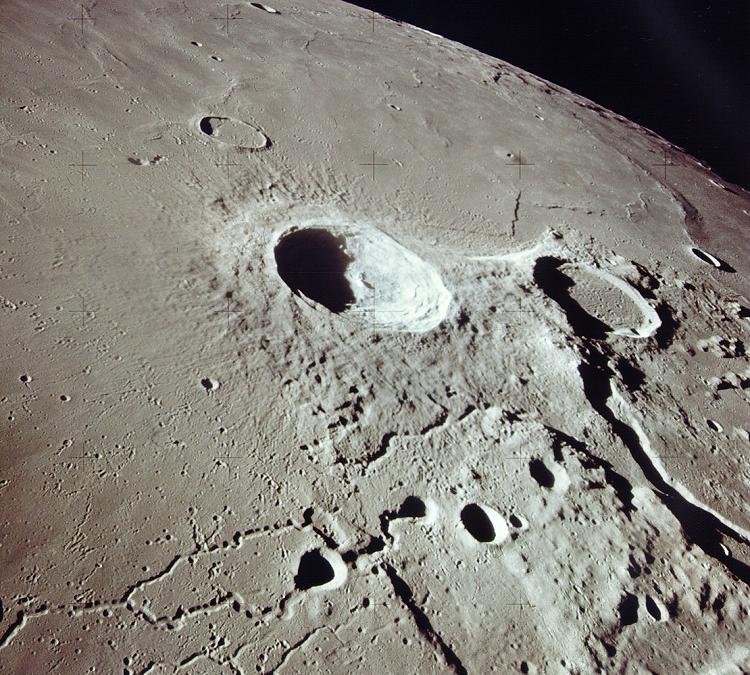|
Rimae Aristarchus
The ''Rimea Aristarchus'' is a system of narrow sinuous rille Rille (German for 'groove') is typically used to describe any of the long, narrow depressions in the surface of the Moon that resemble channels. The Latin term is ''rima'', plural ''rimae''. Typically, a rille can be several kilometers wid ...s to the north of the Aristarchus crater. They extend for a distance of 121 km, making them amongst the largest rilles on the moon. References Geological features on the Moon {{Moon-crater-stub ... [...More Info...] [...Related Items...] OR: [Wikipedia] [Google] [Baidu] |
Rille
Rille (German for 'groove') is typically used to describe any of the long, narrow depressions in the surface of the Moon that resemble channels. The Latin term is ''rima'', plural ''rimae''. Typically, a rille can be several kilometers wide and hundreds of kilometers in length. However, the term has also been used loosely to describe similar structures on a number of planets in the Solar System, including Mars, Venus, and on a number of moons. All bear a structural resemblance to each other. Structures Three types of rille are found on the lunar surface: * Sinuous rilles meander in a curved path like a mature river, and are commonly thought to be the remains of collapsed lava tubes or extinct lava flows. They usually begin at an extinct volcano, then meander and sometimes split as they are followed across the surface. , 195 sinuous rilles have been identified on the Moon. Vallis Schröteri in Oceanus Procellarum is the largest sinuous rille, and Rima Hadley is the only one ... [...More Info...] [...Related Items...] OR: [Wikipedia] [Google] [Baidu] |
Aristarchus (crater)
Aristarchus is a lunar impact crater that lies in the northwest part of the Moon's near side. It is considered the brightest of the large formations on the lunar surface, with an albedo nearly double that of most lunar features. The feature is bright enough to be visible to the naked eye, and displays unusually bright features when viewed through a large telescope. It is also readily identified when most of the lunar surface is illuminated by earthshine. The crater is deeper than the Grand Canyon. The crater is named after the Greek astronomer Aristarchus of Samos. It is located at the southeastern edge of the Aristarchus plateau, an elevated area that contains a number of volcanic features, such as sinuous rilles. This area is also noted for the large number of reported transient lunar phenomena, as well as recent emissions of radon gas as measured by the Lunar Prospector spacecraft. Selenography Aristarchus is located on the Aristarchus plateau, an elevated rocky rise ... [...More Info...] [...Related Items...] OR: [Wikipedia] [Google] [Baidu] |
European Geosciences Union
The European Geosciences Union (EGU) is a non-profit international union in the fields of Earth, planetary, and space sciences whose vision is to "realise a sustainable and just future for humanity and for the planet." The organisation has headquarters in Munich (Germany). Membership is open to individuals who are professionally engaged in or associated with these fields and related studies, including students and retired seniors. The EGU publishes 18 open-access scientific journals and a number of other science publications. It also organises a number of topical meetings, as well as education and outreach activities. Its most prominent event is the EGU General Assembly, an annual conference that brings together over 15,000 scientists from all over the world. The meeting's sessions cover a wide range of topics, including volcanology, planetary exploration, the Earth's internal structure and atmosphere, climate change, and renewable energies. The EGU has 22 scientific divisions ... [...More Info...] [...Related Items...] OR: [Wikipedia] [Google] [Baidu] |
American Geophysical Union
The American Geophysical Union (AGU) is a 501(c)(3) nonprofit organization of Earth, atmospheric, ocean, hydrologic, space, and planetary scientists and enthusiasts that according to their website includes 130,000 people (not members). AGU's activities are focused on the organization and dissemination of scientific information in the interdisciplinary and international fields within the Earth and space sciences. The geophysical sciences involve four fundamental areas: atmospheric and ocean sciences; solid-Earth sciences; hydrologic sciences; and space sciences. The organization's headquarters is located on Florida Avenue in Washington, D.C. History The AGU was established in December 1919 by the National Research Council (NRC) to represent the United States in the International Union of Geodesy and Geophysics (IUGG), and its first chairman was William Bowie of the United States Coast and Geodetic Survey (USCGS). For more than 50 years, it operated as an unincorporated affili ... [...More Info...] [...Related Items...] OR: [Wikipedia] [Google] [Baidu] |


